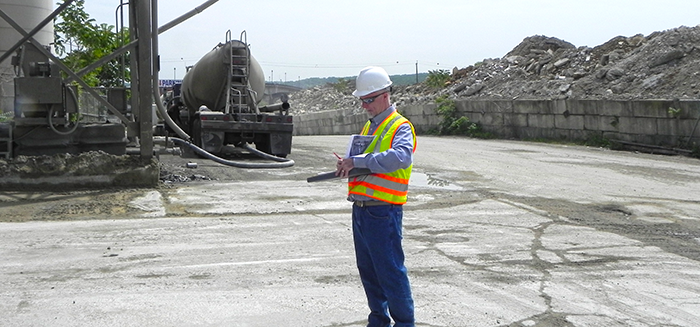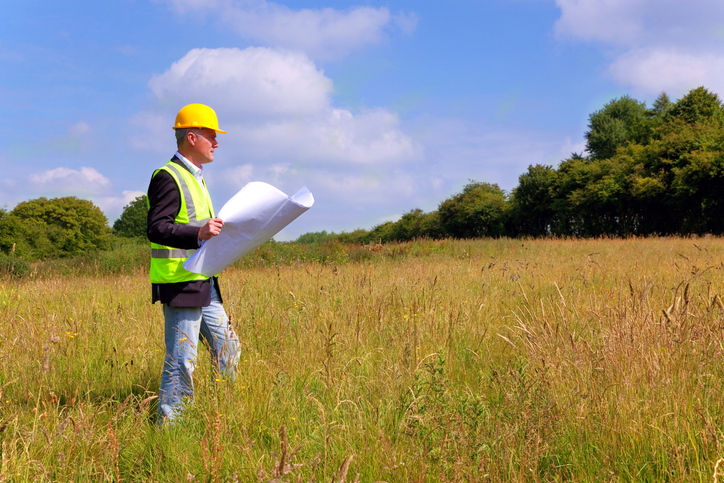
What is a Phase II?
A Phase II Environmental Site Assessment (ESA) is an in-depth procedure conducted by a environmental professional to confirm the presence or absence of suspected contaminants.
This assessment typically follows a Phase I ESA and involves more intensive methods such as soil, groundwater, or building materials sampling and laboratory analysis.
Phase II ESAs are essential when dealing with properties that may have been affected by hazardous substances. The environmental site assessment process provide a detailed understanding of the environmental conditions at a site and act as a critical tool in managing potential liabilities associated with contamination. Conducting an environmental site assessment is a staple of a companies environmental due diligence.

What’s the Difference Between a Phase I Environmental Site Assessment and Phase II Environmental Site Assessment?
While both assessments aim to evaluate potential environmental risks associated with a property, their methodologies differ significantly.
Phase I environmental site assessments are essentially a preliminary study. It involves a detailed review of historical records and a visual inspection of the property to identify potential environmental risks. This phase does not involve any physical testing or sampling.
Instead, it focuses on identifying ‘Recognized Environmental Conditions’ (RECs) that indicate the possible presence of contamination on the site.
On the other hand, a Phase II assessment is a more detailed and hands-on investigation. It is triggered when RECs are identified during the Phase I assessment. Phase II involves actual sampling and testing of soil, groundwater, or building materials to confirm if suspected contaminants exist at concentrations above regulatory limits.
When Do I Need a Limited Phase II ESA?
A Limited Phase II ESA is often required when the Phase I ESA identifies potential environmental risks, but the suspected contamination is localized to specific areas of the site.
This more focused assessment is less extensive — and thus less costly — than a full Phase II ESA but still provides valuable insight into potential environmental liabilities. It involves targeted sampling and analysis based on the findings from the Phase I ESA.

Who Pays For A Phase 2 ESA?
Typically, the party who stands to benefit from the information generated by a Phase II ESA is responsible for its cost.
This could be a prospective buyer who wants to ensure they are not acquiring contaminated property, a current property owner seeking to understand their liability, or a lender requiring assurance on the environmental status of a property before approving a loan.
In some cases, the cost may also be negotiated between the buyer and seller as part of the property transaction process.
How Long Does a Phase 2 ESA Take?
The duration of a Phase 2 ESA can vary depending on several factors. These include the size and complexity of the site, the number of samples taken, and laboratory turnaround times for sample analysis. On average, a Phase II ESA can take anywhere from a few weeks to a couple of months to complete.

How Much Does a Phase 2 Environmental Study Cost?
The cost of a Phase 2 ESA varies widely based on the scope of work required. Factors influencing the cost include the size and complexity of the site, the type and number of samples, and the analytical methods used. It can range from a few thousand dollars for a Limited Phase II ESA to tens of thousands for a more complex site.
What Is The Final Goal of a Phase 2 Assessment?
The ultimate goal of a Phase 2 Assessment is to provide a clear understanding of the environmental conditions at a site. The findings from a Phase II ESA can significantly impact property transactions, lending decisions, and redevelopment plans.
If contamination is confirmed, it may necessitate remediation under local, state, or federal regulations. By identifying these issues early, businesses can proactively manage potential liabilities and avoid unexpected costs and delays.

Conclusion:
In conclusion, a Phase II Environmental Site Assessment is a critical tool in managing environmental risks. This environmental assessment provides a detailed understanding of the recognized environmental condition at a site, helping stakeholders make informed decisions and potentially avoid significant future liabilities.
Although the process may seem daunting, it is a crucial step towards ensuring the safe and responsible use of land.

Need Help?
Our team of experts can help you with whatever compliance issues you may be facing. Whether it is understanding the complexities of a given regulation or recognizing where your company needs to improve, we have the necessary skills and experience to provide assistance.
We will take the time to understand your unique needs and develop tailored solutions that address those needs. For facilites looking for help navigating the often perplexing regulatory landscape, contact us today!
Need an Audit?
Are you thinking about getting an environmental audit? Let us help!